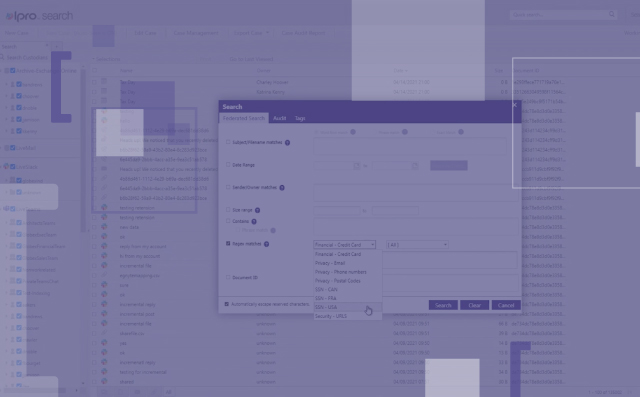
By Barbara Broadnax, UX Designer, IPRO Product Management
If you’re in eDiscovery, you have heard a lot about artificial intelligence and information governance over the past few years.
Prior to 2020 these once esoteric concepts had already begun to dominate conversations related to legal technology. Then the rise in work from home ushered in a new era of collaboration tools that put these concepts front and center.
The IPRO product team is listening closely to eDiscovery professionals to understand how these and other innovative technologies can improve the way you work.
Tracking new requests
For example, have you ever spoken with sales or a member of support with a bug or feature request?
When you make a request for a feature or an improvement on a current feature, that feedback is noted in a database that IPRO’s product team uses to track what is important to users.
This database is searchable, and as product leaders at IPRO plan our roadmap, they use feedback in the database to inform decisions about what portions of IPRO need the most attention. We endeavor to strike a healthy balance between requested updates to functionality, new features, and bug fixes for each release.
Incorporating requests into roadmaps
IPRO’s roadmap is used to decide where we will take each part of the platform. Roadmap refinement sessions occur bi-weekly. During this time, product managers analyze user feedback against their knowledge of the direction of the industry to develop a plan for improving the platform.
Once we have accepted a feature or improvement into our product plan, a small team is formed. Comprised of a Product Manager, a UX practitioner and a developer, this trio kicks off the feature design by researching the customer needs. They avoid making assumptions about what customers want. Instead, they apply a scientific method, conducting research to better understand your expectations.
Growing teams to interview users
This is a great time to mention that our acquisitions — most recently NetGovern and ZyLAB— allow us to grow our teams and accelerate our efforts to meet customer expectations.
This recent growth is essential, as one of the most important parts of the research is interviewing users, including those that submitted the feature request. As the feature design takes shape, we continue to collect insights and feedback from users to refine the solution and determine the scope.
The UX practitioner then begins putting together low fidelity prototypes, similar to an architect sketching structures on napkins. Low fidelity gives us room for creative problem solving without committing to an untested solution.
These prototypes are shared with the Developer and the Product Manager.
The developer sets expectations about what can realistically be built. Then, they help the other members understand the solution’s requirements.
A full team effort
The Product Manager keeps an eye on the entire process to ensure that the team stays within scope while keeping internal stakeholders in the loop. When the focus of the project is building something completely new, the product manager also plans what will be in the first release.
The team continues to iterate on the prototype until they can agree on something that can be presented to internal stakeholders. It can take many tries to produce something that is worth building into a working prototype.
When it’s time to present a higher quality version of the prototype, the trio will hold usability sessions with internal subject matter experts like Trainers and Customer Success Managers. These IPRO employees help uncover hidden insights and suggest users to contact for external usability sessions.
As the prototype is tested the UX person will rapidly iterate, until they have a design that meets the scope agreed upon at the beginning of the design stage.
As the design phase of the project begins to wrap up, the trio prepares to turn the prototype over to a team of engineers. This is a group of front end and backend developers that will build the real working version of the product.
The product manager will meet to work with the engineers to split the work up into much smaller chunks. As segments are built the team will regularly demo to the company.
Finally, when the product is completed, and after it has been greenlit, it is added to the upcoming release, and ready to be pushed to users. The trio that developed the solution seeks feedback from users who adopt the new solution and they immediately begin planning for the next version.
It’s a cycle of feedback, research, design, and development. It involves communication and cooperation among IPRO’s staff to bring users a best-in-class solution.
To volunteer to help the product team in future research efforts, send us an email ([email protected]).
If you’d like to learn more about IPRO’s products or if you’d like to purchase any type of training, head to our online Learning Center: https://learn.staging.ipro.com/
IPRO’s Help Center, where you can find documentation on all IPRO products, can also be found here: https://my.staging.ipro.com/help
If you have topics you’d like for us to cover, please feel free to drop us a line and we will incorporate your ideas into future blog posts.


